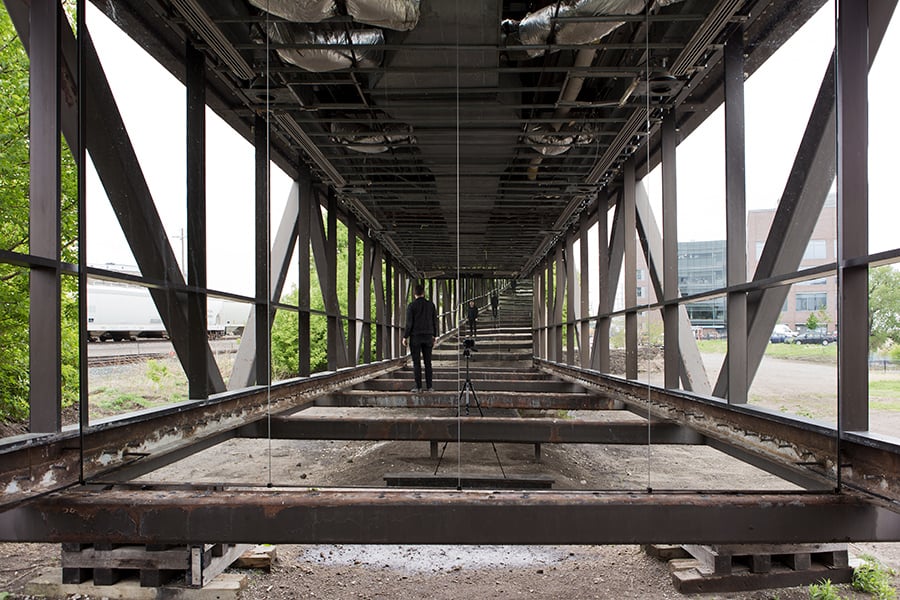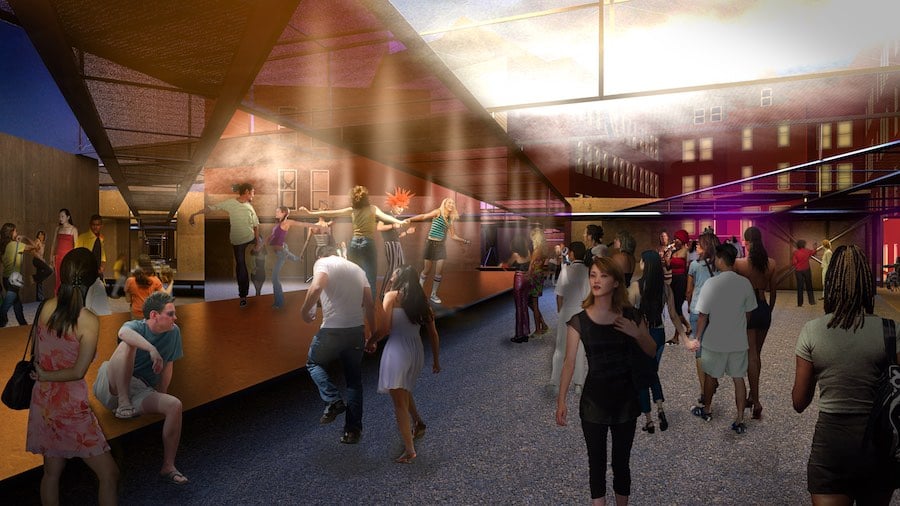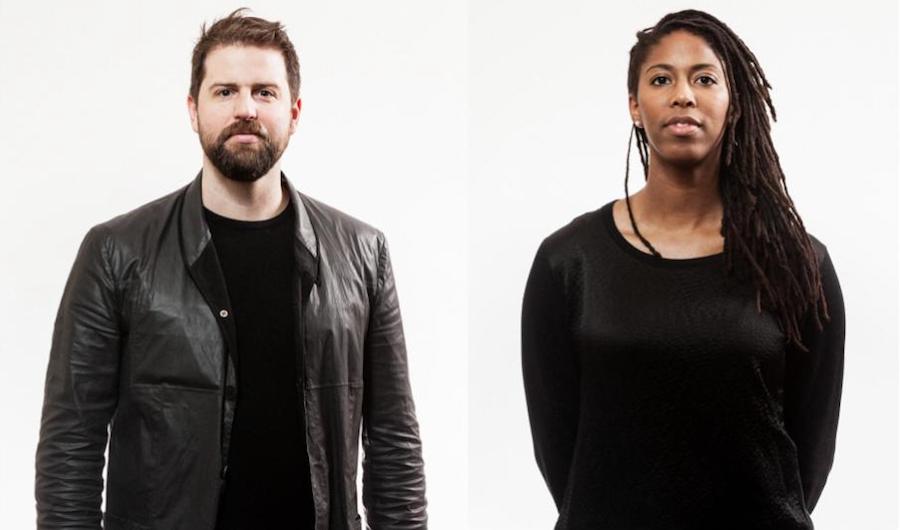
March 6, 2018
Minneapolis Duo Dream the Combine Selected to Build 2018 MoMA PS1 Pavilion
The Minneapolis-based architects will install Hide & Seek, an immersive mirrored environment, in the museum’s courtyard this summer.

MoMA PS1’s Young Architects Program (YAP) is an annual opportunity for young design firms to flaunt some serious architectural muscle. The past 19 pavilions have variously celebrated technology (Jenny Sabin’s glowing Lumen last summer), materials (The Living’s tower of mushroom bricks), or even the museum’s courtyard itself (Escobedo Soliz Studio’s ephemeral Weaving the Courtyard).
This year’s chosen firm hopes to expand MoMA PS1’s cloistered front yard outward—metaphorically, experientially, and visually. The Long Island City, Queens, museum announced today that it has selected Minneapolis-based firm Dream the Combine to design the summer installation for its Warm Up concert series.
Called Hide & Seek, Dream the Combine’s pavilion will consist of a series of interlocking spatial bands defined by steel frames and canvas canopies overhead. Rotating mirrors at the ends of these elements, animated by wind and visitors, will replicate the surrounding architecture and revelry into giddy infinities. “It casts this equalizing space,” posits firm co-founder Jennifer Newsom. “Everybody could be there with their multiple perspectives, their multiple histories of movement.”

Dream the Combine, helmed by Newsom with her husband Tom Carruthers, was established in 2013. Over the last five years, the firm (named for a dream the architects’ child had) has explored installation-scale work that activates overlooked space, often through visual sleights of hand. (See Metropolis’s recent profile of the firm.)
Take Longing, a discarded piece of Minneapolis’s iconic skyway that the duo transformed into a surreal infinity room through bending mirrors. Or Clearing, which replicated a surrounding park through mirrors positioned on poles, in the vein of land artists like Robert Smithson or Walter de Maria.
Visually and conceptually, the design for Hide & Seek is a compendium of the young firm’s work so far. They drew from Longing in particular, say Newsom and Carruthers. In addition to their signature mirrored surfaces, their PS1 installation encourages performance and participation. A floating runway, for instance, functions as seating but also begs to be danced upon. An outsized hammock will facilitate lounging, but also climbing.
As they develop their design, says Carruthers, they will continue to investigate how the pavilion will function over the course of the day—not just in party mode. “How do you invite people into performance, and then how do you all for these moments of reset? It’s like when the curtain comes down in theater,” he says.
Newsom and Carruthers will be working closely with their friend and frequent collaborator Clayton Binkley, an associate principal at the engineering firm Arup. The structure, Binkley says, isn’t overly complicated so the main challenge will be “how we reinforce the formal concepts that are in the piece and make them really legible.”
Carruthers, who worked with Binkley on the fabrication of Jenny Sabin’s pavilion last year, will spend the next several months creating Hide & Seek’s prefabricated steel system in his Minneapolis metal shop. The structure will be trucked to Long Island City, where the installation will be erected in PS1’s courtyard.
Dream the Combine’s design beat out proposals by LeCavalier R+D, FreelandBuck, OFICINAA, and BairBalliet. All five finalist schemes will be a part of an exhibition at MoMA over the summer.
Sean Anderson, the associate curator at MoMA who oversees YAP, was particularly struck by Hide & Seek’s unique sense of place. “As art can and should move through walls, so too does Jennifer Newsom and Tom Carruthers’s architecture that re-stages how and why communities interact with the museum,” he said in the museum’s announcement. The pavilion, Anderson continued, will be “a scaled system that addresses multiple publics with the impassioned statement, ‘You Are Here.’”
You might also like, “Dream the Combine Creates Otherworldy Installations.”
Recent Viewpoints
Viewpoints
Navigating the Path to Net Zero








